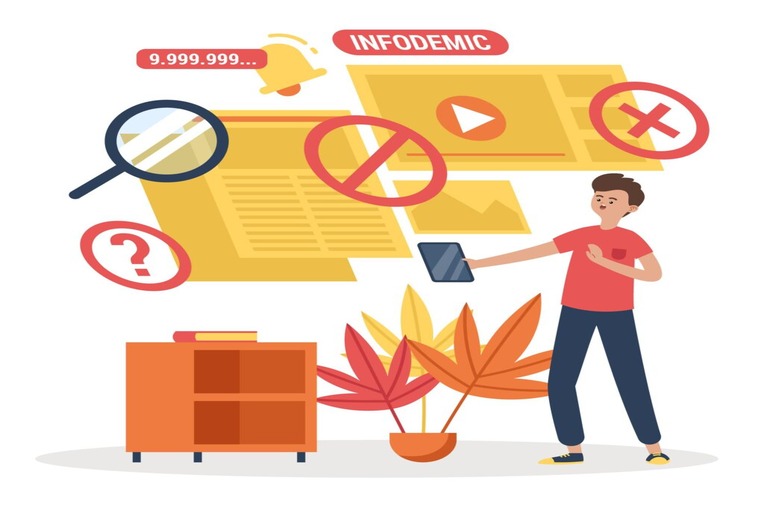So, you are experiencing attacks on your personal brand as negative opinions, reviews, and rumors and you want to get rid of this negative publicity. Understandably, negative content can seriously harm the reputation of any brand, business or personal.
Don’t let such content ruin your peace. Although such attacks can have huge consequences for brands, they are not impossible to mitigate. Instead, if you deal with them promptly and confidently, this negative digital coverage can give you an opportunity to cement your brand’s authority in the eyes of your most important stakeholders.
What are adequate responses to negative content? How should you approach such crises? In the end, what is negative content that might hurt a brand? Let’s learn all this and more in this blog post.
What is Negative Content?
‘All attention is good attention.’
This medieval proverb doesn’t apply to most brands in today’s marketing horizon. Today, businesses experience repercussions for negative reviews, complaints, rumors, explicit imagery, leaked personal information, and negative opinions and forecasts. Life has changed because of advancements in the digital marketing landscape.
Nowadays, personal brands take special care to steer clear of negative publicity to shield their relationships and impact against decline and deterioration. Today, brands have to deal with a variety of negative content. These can be falsified accounts like edited images or videos, falsified accounts of poor service or customer care, or rumors about the personal or work ethics of the person behind the brand.
Sometimes, the information is correct but gains more attention than it deserves. So, the brand can get policed for one bad service experience or encounter that downplays its years of service and commitment.
Brands also get hit by negative content that is founded on opinions and analysis from industry experts. So, if a critic has something negative to say about your brand, you will see a sudden shift in your people’s perception about you and you may not like this change. At the same time, the impact of such an opinion will increase with the authority of the critic.
In the end, your brand may suffer such attacks if paparazzi, your competitors, or fans have stolen information about your upcoming projects and shared it online with or without credit. Oftentimes, such thefts seriously undermine the profitability and potential of developing projects. Sometimes, this damage is so huge that it kills the whole project.
Monitoring Negative Content
The bad thing with negative content is that it catches most brands with a surprise as they only get a whiff of it when the information has already gone viral. It happens when the brand doesn’t actively engage in reputation monitoring.
Reputation monitoring is a continuous task that uses premium tools to track and analyze people’s opinions about brands. Of course, some tools dig deeper than the first few pages of Google to gauge these sentiments while others complete the task with superficial analysis. A reliable personal branding agency will conduct this monitoring exercise regularly to detect developing opinions before they become a problem.
Removing Negative Content
For most types of negative content, the best recourse is to remove the content. Types of negative content that demand immediate removal of content include publication of personal data, viral unsolicited sharing of information on upcoming projects, and unsolicited dispersal of personal information.
In other words, you should resort to negative content removal immediately if your data privacy is breached.
Alternatives to Negative Content Removal
Many branding specialists believe that they should remove every type of negative content about their brands. It’s a wrong strategy that deprives personal brands of unique opportunities to build authenticity and lasting relationships. In fact, removing negative opinions or information from a negative client review will harm the brand even more. Different types of negative content demand varying responses. Here are a few responses that branding agencies use to amplify the positive contribution of their clients so this publicity can take care of negative sentiments on its own.
Suppressing Negative Opinion
If an opponent or an analyst finds your brand less beneficial than it is, you can seek the opinion of other analysts in your industry. Reach out to those analysts who believe in your impact and ask them to comment on this impact. Depending on the authority of the critic and the seriousness of the opinion he has presented, you may want to get opinions from one or more credible authorities in your field.
Refute the Claims
Fake news about your brand is the only piece of negative attention that will benefit you. All you have to do is to respond to it promptly and adequately. React to the fake piece of information without delay and refute it. Do it before it is seen and heard by the people that matter.
Once you have refuted the claim, you have already had your say reach the people along with the fake news. Sometimes, simply refuting the claim isn’t enough on its own. You also have to amplify this refutation so its adequate audiences can hear it. Here, our personal branding agency helps our clients get enough media coverage to drown the fake news.
Communicate with Stakeholders
When fake news is damaging your reputation in the eyes of stakeholders, you need to talk business and build relationships. In such situations, mass communication about your viewpoint helps only a little. When stakeholders are hurt by the bad news, they need reassurance on a more personal level.
You cannot expect that the comments that you have delivered for the masses will soothe the nerves of those stakeholders who are directly affected by the rumors, can you? Holding up webinars or meetings with these stakeholders is a great way to deal with their concerns and communicate your viewpoint about these situations. Also, you will want to educate them about your policies to mitigate such rumors in the future.
Wrapping Up
Negative content removal is one of the most sought-after techniques by personal brands facing a reputation crisis. This technique does wonders in many situations, but it’s not the only technique to use to manage negative opinions or talk about your brand. This blog talks about the negative content that might hurt a brand and strategies to remove it.



